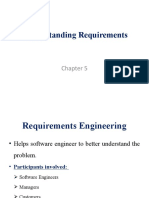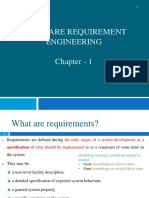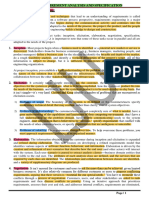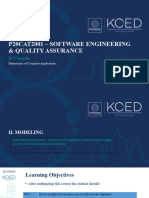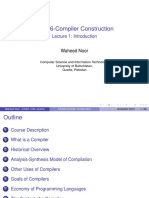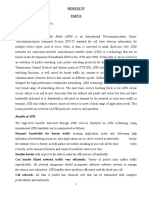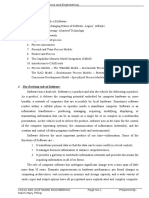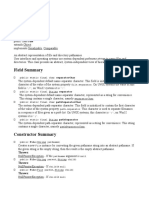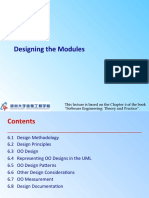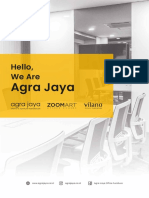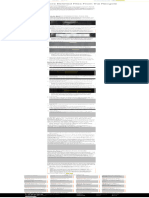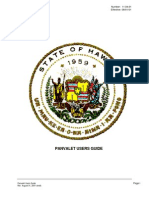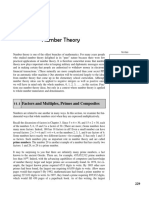0% found this document useful (0 votes)
90 views14 pagesSoftware Engineering
The document discusses requirement engineering, which involves systematically defining, managing, and testing requirements for a software product. It defines requirements engineering and outlines its key tasks, including inception, elicitation, elaboration, negotiation, specification, validation, and management. It describes characteristics of good requirements and challenges in requirements engineering. Finally, it provides details on initiating the requirements engineering process, including identifying stakeholders, asking relevant questions, and collaborative techniques for eliciting requirements.
Uploaded by
Jeena Mol AbrahamCopyright
© © All Rights Reserved
We take content rights seriously. If you suspect this is your content, claim it here.
Available Formats
Download as PDF, TXT or read online on Scribd
0% found this document useful (0 votes)
90 views14 pagesSoftware Engineering
The document discusses requirement engineering, which involves systematically defining, managing, and testing requirements for a software product. It defines requirements engineering and outlines its key tasks, including inception, elicitation, elaboration, negotiation, specification, validation, and management. It describes characteristics of good requirements and challenges in requirements engineering. Finally, it provides details on initiating the requirements engineering process, including identifying stakeholders, asking relevant questions, and collaborative techniques for eliciting requirements.
Uploaded by
Jeena Mol AbrahamCopyright
© © All Rights Reserved
We take content rights seriously. If you suspect this is your content, claim it here.
Available Formats
Download as PDF, TXT or read online on Scribd
/ 14







